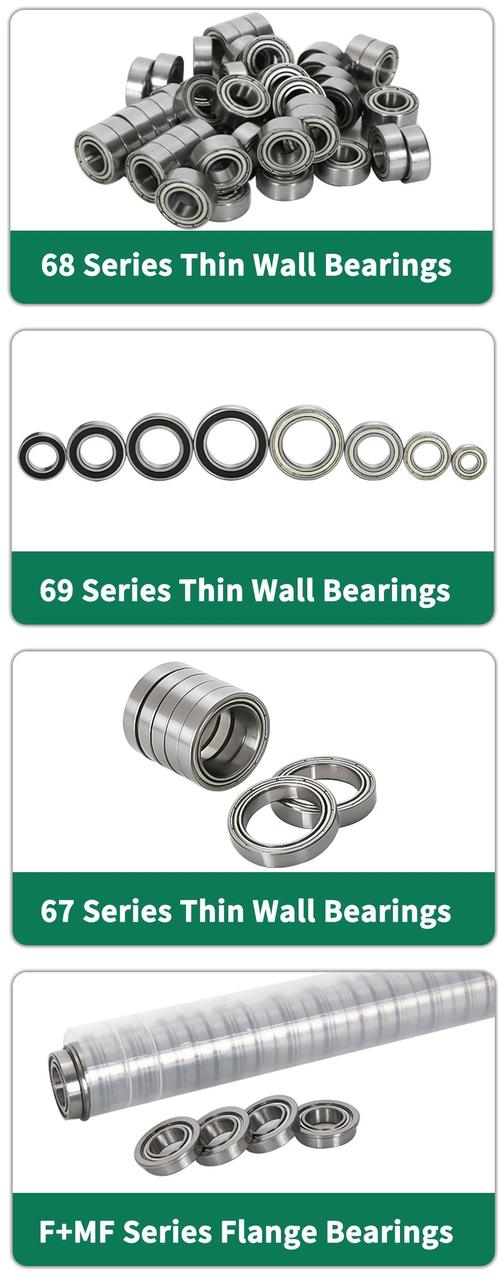Stainless Steel Bearings Price List 2023: Comprehensive Guide
Stainless steel bearings are essential components in industries requiring corrosion resistance and durability. This price list guide examines cost variations across grades like 304/316 stainless steel, compares密封 types, and analyzes bulk purchase discounts for industrial applications.
Table of Contents
1. Stainless steel bearings price per piece2. 304 vs 316 stainless steel bearings cost
3. Food grade stainless bearings prices
4. High temperature stainless steel bearing costs
5. Stainless steel ball bearings bulk pricing
1. Stainless steel bearings price per piece
 Single-unit stainless steel bearing prices range from $8.50 to $45 based on specifications. Standard 6200-2RS 304 stainless bearings typically cost $12-$18 per unit from major suppliers like SKF or NSK. Precision ABEC-5 grades increase costs by 30-40%, while miniature bearings under 10mm diameter command premium pricing up to $28/unit. Prices fluctuate with chromium/nickel content - 316L marine-grade bearings average 25% higher than standard 304 variants. Recent market data shows 7% price increase for European-made bearings due to energy costs.
Single-unit stainless steel bearing prices range from $8.50 to $45 based on specifications. Standard 6200-2RS 304 stainless bearings typically cost $12-$18 per unit from major suppliers like SKF or NSK. Precision ABEC-5 grades increase costs by 30-40%, while miniature bearings under 10mm diameter command premium pricing up to $28/unit. Prices fluctuate with chromium/nickel content - 316L marine-grade bearings average 25% higher than standard 304 variants. Recent market data shows 7% price increase for European-made bearings due to energy costs.
2. 304 vs 316 stainless steel bearings cost
304 stainless bearings remain the budget option at $10-$22/unit, while 316L variants range $15-$35. The 8-10% molybdenum content in 316L improves chloride resistance but increases material costs by 40%. For chemical processing plants, 316 bearings offer 3-5x longer service life despite higher initial cost. Food industry applications often require 316L's non-reactive properties, adding 18-22% to project budgets. Specialized 316Ti (titanium-stabilized) bearings for nuclear applications can exceed $120/unit.
3. Food grade stainless bearings prices
FDA-compliant food-grade bearings cost $25-$85 depending on certification level. Basic 304 stainless bearings with NSF registration start at $25, while 316L bearings with 3-A sanitary certification reach $45-$60. Ultra-clean designs for pharmaceutical use featuring special lubricants and mirror polishing command $75-$85/unit. Bulk purchases (500 units) reduce costs by 15-20%. Leading suppliers like RBC Bearings charge 10-15% premium for documentation packages including material traceability and compliance certificates.
4. High temperature stainless steel bearing costs
Heat-resistant stainless bearings (500°F continuous operation) range from $38 to $150. Standard high-temp 440C stainless bearings cost $38-$55, while specialized grades like BG42 (600°F) reach $90-$120. Aerospace-grade M50 steel hybrids with ceramic balls exceed $150. Prices reflect special heat treatments - stabilization processes add 20-25% to base costs. High-temp lubricants (perfluoropolyether) increase pricing by $8-$12/unit. Recent DOE studies show optimized high-temp bearings reduce maintenance costs by 40% in furnace applications.
5. Stainless steel ball bearings bulk pricing
Bulk orders (1000 units) reduce per-unit costs by 30-50%. Standard 608-2RS stainless bearings drop from $9.50 to $6.80/unit at 1000pc quantity. Customized batches with laser-marked IDs add $0.25-$0.75/unit. Container-load purchases (20,000 units) from Asian manufacturers offer rates as low as $4.20/unit for 6200 series. However, import duties (7.2% for US) and 10-12 week lead times must be factored. Tiered pricing from Timken shows 1-49 units at $14.95, 50-499 at $11.20, and 500 at $8.75 for 6301-2RS models.
Understanding stainless bearing pricing requires evaluating material grades, quantity breaks, and industry-specific requirements. From food processing to marine applications, cost variations reflect performance characteristics like corrosion resistance and temperature tolerance. Our analysis covers critical factors from bulk purchasing strategies to certification impacts - essential knowledge for procurement specialists managing MRO budgets or OEM production lines.
This comprehensive guide has examined stainless steel bearing pricing through five critical lenses: unit costs, material comparisons, industry-specific requirements, extreme condition performance, and volume purchasing strategies. By understanding these interlocking factors, engineers and purchasers can optimize specifications, negotiate effectively with suppliers, and select bearings that deliver maximum value through their lifecycle.




 13869596835
13869596835